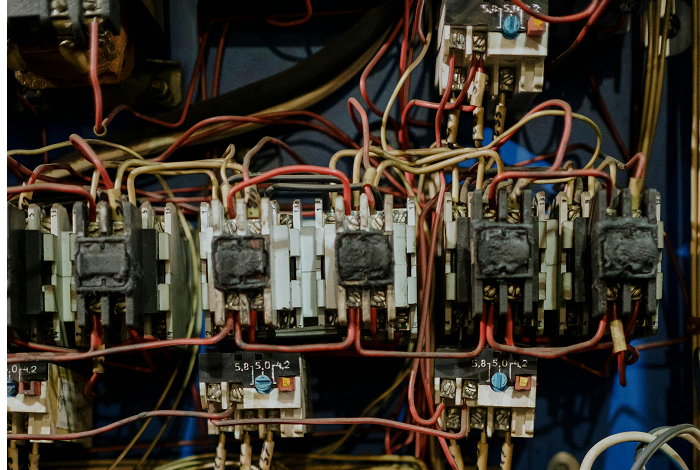Mastering Home Wiring: Identifying and Fixing Loose Wiring Issues
By Zach Potter · Jul 25, 2025

If you're a homeowner or a DIY enthusiast looking to ensure the safety and functionality of your home's electrical system, understanding and addressing loose wiring issues is crucial. Loose wiring isn't just an inconvenience; it can lead to significant safety concerns, including electrical fires and system failures. Home wiring can be complex, but this guide aims to simplify it by providing insights into identifying loose wiring, understanding the risks, and addressing these issues to keep your home safe. Let's dive into the essentials of home wiring and how to handle loose wiring effectively.
Understanding Home Wiring
Home wiring refers to the electrical system that powers all the appliances, lighting, and devices in your home. Properly installed wiring ensures that electricity is safely distributed to all parts of your home. However, over time, wiring issues can arise, particularly if the system is outdated or improperly maintained.
Components of Home Wiring
- Circuit Breaker Panel: Regulates the electricity flow and serves as the central control point.
- Electrical Wirings: Conductors that distribute electricity throughout the home.
- Outlets and Switches: Points where electrical devices are plugged in or controlled.
- Junction Boxes: Enclosures that house wire connections.
Identifying Loose Wiring Issues
Loose wiring can manifest in various ways. It's essential to detect the signs early to prevent potential hazards.
Common Indicators of Loose Wiring
- Flickering Lights: One of the most noticeable signs. Intermittent light indicates a connection problem.
- Burning Smell: A persistent burning smell can indicate overheating wires.
- Sparking or Buzzing: Outlets or switches that spark or buzz suggest loose wiring connections.
- Warm Outlets: Outlets or switches that feel warm to the touch may have loose connections.
- Circuit Breaker Tripping: Frequent tripping of the breaker could indicate a wiring issue.
If you observe any of these signs, immediate action is required to resolve the wiring problem and ensure your home's safety.
Addressing Loose Wiring Safely
Safety Precautions
Before attempting any repairs, it's crucial to observe safety protocols:
- Turn Off the Power: Always turn off the power at the breaker box before touching any wiring.
- Use Insulated Tools: Ensure your tools have rubber insulation to prevent electrical shock.
- Wear Safety Gear: Use gloves and safety goggles to protect yourself.
Steps to Address Loose Wiring
- Inspect and Identify: Use a voltage tester to ensure the power is off. Inspect outlets, switches, and junction boxes for loose wires.
- Tighten Connections: Secure any loose wires by tightening screws in outlets and switches. Ensure all connections are firm.
- Check Junction Boxes: Ensure all wire nuts are securely fastened and wires are not exposed.
- Replace Damaged Components: Replace any damaged outlets, switches, or wires to prevent future issues.
Using a Multimeter
A multimeter is an invaluable tool for diagnosing wiring issues. It measures the voltage, current, and resistance, helping you identify where the problem lies.
Preventing Loose Wiring Issues
Preventive measures can help keep your home wiring system in top condition and reduce the risk of loose wiring.
Regular Inspections
- Routine Checks: Periodically inspect all outlets, switches, and junction boxes for signs of wear and tear.
- Professional Inspections: Have a licensed electrician conduct thorough inspections of your home's wiring system every few years.
Proper Installation Practices
- Avoid Overloading Circuits: Ensure that your circuits are not overloaded, as this can cause loose connections.
- Use Correct Wire Sizes: Use the appropriate wire gauge for the electrical load to prevent overheating and loose connections.
Addressing Wiring Issues Immediately
Promptly address any wiring issues as they arise. Delaying repairs can lead to more significant problems and potential hazards.
Common Wiring Issues and Solutions
Loose Connections in Outlets and Switches
Loose connections in outlets and switches are common and can usually be fixed with simple adjustments.
- Turn Off Power: Ensure the power is off at the breaker.
- Remove Cover Plate: Unscrew the cover plate to access the outlet or switch.
- Tighten Screws: Secure the screws holding the wires in place.
- Test the Connection: Turn the power back on and test to ensure the connection is stable.
Faulty Junction Boxes
Improper connections in junction boxes can cause significant issues. It's essential to ensure all connections are secure and insulated.
- Inspect Wire Nuts: Check all wire nuts for tightness and replace any that are damaged.
- Secure Wires: Make sure all wire connections are secure within the box.
Aging Wiring
Older homes often have aging wiring that may not meet current safety standards. If you suspect your wiring is outdated:
- Consult a Professional: Have a licensed electrician evaluate your home wiring system.
- Upgrade as Needed: Consider upgrading to modern wiring standards.
When to Call a Professional
While DIY efforts can address minor issues, some situations require a professional's expertise:
- Extensive Repairs: For significant repairs or rewiring projects, hire a licensed electrician.
- Code Compliance: Ensure all work complies with local electrical codes.
- Complex Issues: If you're unsure of the problem's extent, professional inspection and repair are the safest options .
Conclusion
Understanding and addressing loose wiring issues is crucial for maintaining a safe and functional home. Regular inspections, proper installation practices, and prompt attention to any signs of trouble can prevent significant hazards. While minor issues can often be addressed with DIY methods, do not hesitate to seek professional help for more complex problems.
For homeowners seeking professional assistance, HouzTask provides a reliable platform to find certified electricians and other home service professionals. If you have more questions or need professional assistance, use HouzTask's AI for guidance and finding local pros effortlessly.
Need help?
Let HouzTask help you diagnose the issue or connect with a trusted local pro — in minutes.
Get Started with HouzTask